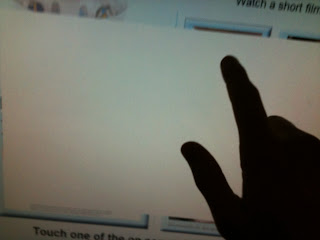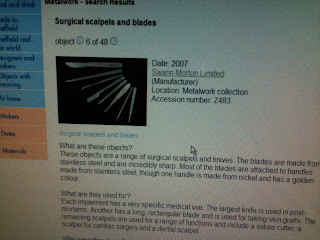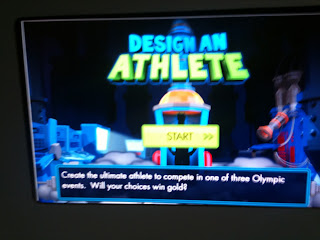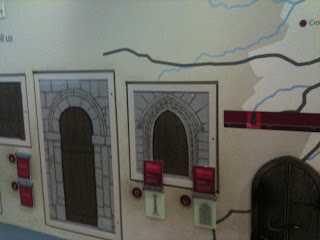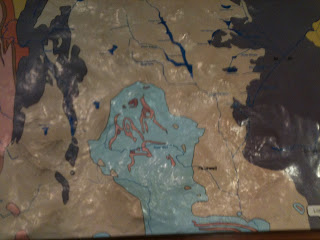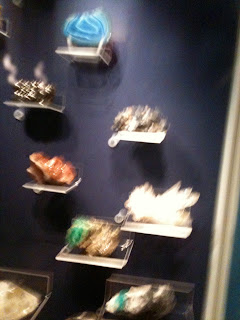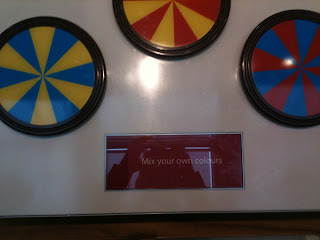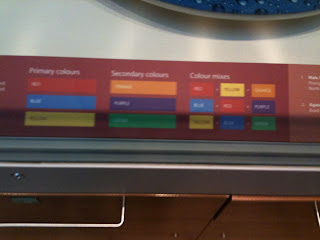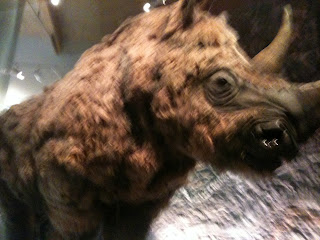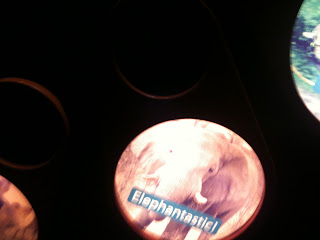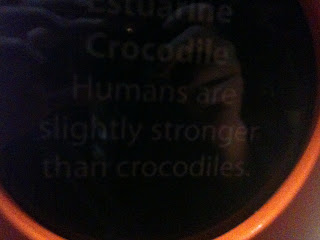Mad as a teapot is a Sheffield Hallam University based team who are creating a Flash-based game about the metalwork collection at Sheffield Mueseum. The game is aimed at school children who would have visted the museum as part of a trip and be implemented as a learning tool when they return to school or at home in there own time.
Thursday, 24 February 2011
Software Needed
Here is a list of all the software we plan to use:
Adobe Photoshop
Adobe Flash
Adobe Fireworks
Adobe Bridge
Adobe Soundbooth
Adobe Priemere
Final Cut
Audacity (Possibly)
Adobe Photoshop
Adobe Flash
Adobe Fireworks
Adobe Bridge
Adobe Soundbooth
Adobe Priemere
Final Cut
Audacity (Possibly)
Wednesday, 23 February 2011
Schedule
This is a week by week schedule of what work will be completed between lessons
(organized by lesson commencing)
17/2/2011 Week 4
Astra - Storyboard, 1 character concept and 1 set concept
Elliott - Make a schedule and finalize job roles
Harrison - Convert concepts to assets usable in Flash
Mike - Find sound effects and storyboard
24/2/2011 Week 5
(organized by lesson commencing)
17/2/2011 Week 4
Astra - Storyboard, 1 character concept and 1 set concept
Elliott - Make a schedule and finalize job roles
Harrison - Convert concepts to assets usable in Flash
Mike - Find sound effects and storyboard
24/2/2011 Week 5
Astra - 3 character concepts and 2 set concepts
Elliott - Flash script storyboard
Harrison - Convert concepts to assets usable in Flash
Mike - Main theme recording
Note - Storyboarding not complete by the 24/2/2011 so will need to be completed by Mike and Astra ASAP
Note - Astra's week 4 work uncomplete so will be added on top of this weeks
Note - Astra's week 4 work uncomplete so will be added on top of this weeks
3/3/2011 Week 6
Astra - 2 character concepts, 3 set concepts
Elliott - Flash animating and Flash scripting
Harrison - Convert concepts to assets usable in Flash
Mike - Voice recordings
10/3/2011 Week 7
Astra - 3 object concepts
Elliott - Flash animating and Flash scripting
Harrison - Convert concepts to assets usable in Flash
Mike - Finish all sound
17/3/2011 Week 8
Astra - 3 object concepts
Elliott - Flash animating and Flash scripting
Harrison - Flash animating, convert concepts to assets usable in Flash
Mike - Adding sound to the Flash
----------------------------------------------------------------------------------------------------------------------
Last update : -
24th February 2011
23rd February 2011
24th February 2011
23rd February 2011
Job Roles
This is clarification on all job titles
Astra - Concept artist, Storyboard artist and Flash animator(if need be)
Elliott - Project manger, Flash animator and Flash scriptor
Harrison - Photoshop/Flash all concepts for use in Flash, Record keeper and Flash animator
Mike - writer, sound artist and mini-game designer
Astra - Concept artist, Storyboard artist and Flash animator(if need be)
Elliott - Project manger, Flash animator and Flash scriptor
Harrison - Photoshop/Flash all concepts for use in Flash, Record keeper and Flash animator
Mike - writer, sound artist and mini-game designer
Sound Effects
As far as the sound for the game goes I did some research and found some free sound effects that can be used in the game that are completely copyright free, it's on the website: http://freesfx.co.uk/
I think special attention should be paid to the horror/sci-fi and ambiences/Background sound effects sections of this website as it will be good for what we are doing, eeary noises, doors closing, cupboards closing and such. This is just an idea for the sound for our project, anybody have any feedback on the idea?
I think special attention should be paid to the horror/sci-fi and ambiences/Background sound effects sections of this website as it will be good for what we are doing, eeary noises, doors closing, cupboards closing and such. This is just an idea for the sound for our project, anybody have any feedback on the idea?
Mini-Games (Further developed)
Here's another 6 Mini-Games I (Mike Leeburn) have created. This is for the group to look through and decide if phisable and what changes, if any, need to be made.
First Mini-Game Idea: A Maze game, this game will have a maze on a lock box that will have 3 layers of maze's on it. As each maze is complete it will fade and the next layer will show which will consist of a harder maze. Once all of the layers are complete the lock box will open revealing the hidden object.
Possible Script hints: "Have you tried moving the green ball?", "I saw the spoon messing with that lock box before, just in the corner..."
Second Mini-Game Idea: Object location, throughout the game objects will be hidden on things like bookshelves and other various high places. The player will have to look around the room looking for objects that they can use to reach up to these high places, so things like books to stand on or chairs to stand on. Once they do this and find the correct item for each place they will find the reward on the top of whatever it is they are climbing.
Possible Script hints: "Have you tried looking in high places?, That magical spoon is a right pest!", "I heard that that magical spoon likes to climb things...", "I saw that magical spoon messing around up near the bookshelves before!..."
Third Mini-Game Idea: A Jigsaw that reveals a clue when it's completed, the pieces could be scattered throughout the rooms in the museum/house and it would be a significant clue that is revealed when the jigsaw is completed. If not a clue it could be a brief history of a vessel(s).
Possible Scrip hints: "I saw some pieces of a jigsaw over there by the bookshelf before, how weird..."
Fourth Mini-Game Idea: A connect the dots Mini-Game in which the player will encounter random pictures that have reduced to dots that need to be connected, when the player connects the dots up the picture will reveal itself and will actually be the item. The magical spoon has encased random vessels inside these devious puzzles and it's the players job to rescue them.
Possible Script hints: "A load of them random pictures started showing up when the magical spoon started hiding things..."The dots seem to make a shape of some kind, try drawing on them and connecting them..."
Fifth Mini-Game Idea: As a test to make sure the player has learnt from the game the final object will be hidden behind a polar bear that the player will have to argue with to retrieve, the polar bear will ask a bunch of questions about vessels already collected and their history and if the player answers correctly they will get the final object but if they answer incorrectly the bear will shout at them in a condescending manner as if they should know these things.
Sixth Mini-Game: Another puzzle game, this will be on a door that will have an object trapped behind it. The puzzle will be a picture of the hidden vessel that has been messed up. The player will have to slide each section of the picture around the spinner until the picture is fully corrected. The slider will consist of 6 layers that the player can slide.The player will have to slide all of the sliders into correct position before the timer runs out (3:00) in the event that the time runs out they will be moved from the puzzle and have to start again when they click on it.
First Mini-Game Idea: A Maze game, this game will have a maze on a lock box that will have 3 layers of maze's on it. As each maze is complete it will fade and the next layer will show which will consist of a harder maze. Once all of the layers are complete the lock box will open revealing the hidden object.
Possible Script hints: "Have you tried moving the green ball?", "I saw the spoon messing with that lock box before, just in the corner..."
Second Mini-Game Idea: Object location, throughout the game objects will be hidden on things like bookshelves and other various high places. The player will have to look around the room looking for objects that they can use to reach up to these high places, so things like books to stand on or chairs to stand on. Once they do this and find the correct item for each place they will find the reward on the top of whatever it is they are climbing.
Possible Script hints: "Have you tried looking in high places?, That magical spoon is a right pest!", "I heard that that magical spoon likes to climb things...", "I saw that magical spoon messing around up near the bookshelves before!..."
Third Mini-Game Idea: A Jigsaw that reveals a clue when it's completed, the pieces could be scattered throughout the rooms in the museum/house and it would be a significant clue that is revealed when the jigsaw is completed. If not a clue it could be a brief history of a vessel(s).
Possible Scrip hints: "I saw some pieces of a jigsaw over there by the bookshelf before, how weird..."
Fourth Mini-Game Idea: A connect the dots Mini-Game in which the player will encounter random pictures that have reduced to dots that need to be connected, when the player connects the dots up the picture will reveal itself and will actually be the item. The magical spoon has encased random vessels inside these devious puzzles and it's the players job to rescue them.
Possible Script hints: "A load of them random pictures started showing up when the magical spoon started hiding things..."The dots seem to make a shape of some kind, try drawing on them and connecting them..."
Fifth Mini-Game Idea: As a test to make sure the player has learnt from the game the final object will be hidden behind a polar bear that the player will have to argue with to retrieve, the polar bear will ask a bunch of questions about vessels already collected and their history and if the player answers correctly they will get the final object but if they answer incorrectly the bear will shout at them in a condescending manner as if they should know these things.
Sixth Mini-Game: Another puzzle game, this will be on a door that will have an object trapped behind it. The puzzle will be a picture of the hidden vessel that has been messed up. The player will have to slide each section of the picture around the spinner until the picture is fully corrected. The slider will consist of 6 layers that the player can slide.The player will have to slide all of the sliders into correct position before the timer runs out (3:00) in the event that the time runs out they will be moved from the puzzle and have to start again when they click on it.
23/02/11 Meeting Decisions
23/02/11 - 4:05pm - 5:00pm
In the meeting that me (Mike Leeburn) and Astra Morley have had we have decided that we are going to split the work that needs to be done into equal amounts.
Two E-mails were sent, one to each of us telling us what to do and when to do it for, the work that was set was to create storyboards for the setting of the game, including the main area and all other alternate areas in the game. There needs to be storyboards of the character standing in the main room interacting with a character in the game.
Sound needs to be created over the weekend and ready for week beginning (23/02/11) This sound needs to be fully copyright free and able to back that up. The script will also need to be created for all the character in the game for when they interact with the player. This will be in the form of a conceptual document. I will also create 6 Mini-Games for the game that will be informative and fun for the player, the reward for completing these mini-games will be the object that has been hidden by the magical spoon. These games will have to be unique and fun but most importantly phisable for the project. I need to consult my group once I have created all the Mini-Games on what will be phisable and what will need to be changed.
In the meeting that me (Mike Leeburn) and Astra Morley have had we have decided that we are going to split the work that needs to be done into equal amounts.
Two E-mails were sent, one to each of us telling us what to do and when to do it for, the work that was set was to create storyboards for the setting of the game, including the main area and all other alternate areas in the game. There needs to be storyboards of the character standing in the main room interacting with a character in the game.
Sound needs to be created over the weekend and ready for week beginning (23/02/11) This sound needs to be fully copyright free and able to back that up. The script will also need to be created for all the character in the game for when they interact with the player. This will be in the form of a conceptual document. I will also create 6 Mini-Games for the game that will be informative and fun for the player, the reward for completing these mini-games will be the object that has been hidden by the magical spoon. These games will have to be unique and fun but most importantly phisable for the project. I need to consult my group once I have created all the Mini-Games on what will be phisable and what will need to be changed.
Notes For The Lesson On The 17th Feb 2011
In this lesson we had to do our presentations of our pitch for our idea. We had the clients from the Museum come and give us feedback about our ideas.
The presentation went okay. We decided to crack on with concept drawings and planning out our game.
The presentation went okay. We decided to crack on with concept drawings and planning out our game.
Tuesday, 22 February 2011
Some Notes To Remember
This is a post for Mike and Astra who are going to do the storyboarding on the 23rd February 2011, the key points to remember are...
- There are six individual mini games
- The games have to be linked to the "five" NPC's
- The NPC's need to teach the audience something about the object in order for the audience to be able to solve the mini game
- There needs to be between four and six themed rooms that have objects reminiscent of west park e.g polar bear
- You also need to storyboard the opening animation sequence
- You have to write everything the characters are going to say when the player clicks on them
- The five characters that have been already determined are the major, the two museum clients, a t.v presenter, the janitor and the majors wife
- Remember they are in a mansion based on the museum itself
This was updated on the: 22nd February 2011
PowerPoint Presentation To Client
This is the PowerPoint presentation that on the 17th February 2011 we presented to the the clients from the museum.
Wednesday, 16 February 2011
Harrison's Concept.
My concept idea involves a mixture of original photography and Photoshop, I would take some stock images at a location of my choice say the Weston Park Museum, things like pillars benches, lights, cabinets, or paintings I would then import them into Photoshop and introduce them into our game environment. The Cut-out effect would then be applied to where nessercery to create a cell shaded look that I believe would appeal to children between the ages of 11-16.
Tuesday, 15 February 2011
Initial Concept For A Possible Design Style
This is a initial concept of a design style by Elliott Parker to be presented to the rest of the group to be voted on by the 16th February.
Group Meeting Tuesday 15th
Start : 2:00
- Discussing script for pitch
- Assigning jobs for Wednesday (Post various visual concepts on the blog, decide on final choice)
- Create some examples for character concepts
- Possible virtual meeting on skype
Presentation Script
Start on Presentation:
- Introduction to Group and Job Roles
- Talk about what jobs are going to be performed by each member and why said job is relevant to the project
Middle of Presentation:
- Talk about game Idea (Detective game, DON'T SAY CLUEDO!) and relevance to the brief, target audience and USP(Unique Selling Point)
- Talk about Mini-Game Ideas - Reference Visuals and talk about incorporation with the project.
- Talk about visual Style of the game - Reference visuals
Conclusion:
- Summarise the presentation - Game Idea, Audience and Mini-Games
- Q and A
Monday, 14 February 2011
Initial Concept
Here are three initial concepts for the basic design of how the game will play.
Game Layout
Mini Game
Object Description
Visual Style Concepts
The visual style of any game is one of its most important features, as our game is point and click based this becomes even more vital to a games overall quality. I have experimented with some minimalist styles overlayed onto an image of the Weston Park Museum witch is a possible setting for our game. Using Adobe Photoshop any image can have a filter applied to it, this technique along with some original artwork could allow us to create a vivid and appealing game.
Sunday, 13 February 2011
Detective Games
Hey Guys, this is just some stuff I got off the internet about detective games, thought we could use some ideas from it, although we are not allowed to use murder weapons from games like ‘Cluedo’, we could adapt some ideas from it.
At the beginning of play, three cards — one suspect, one weapon, and one room card — are chosen at random and put into a special envelope, so that no one can see them. These cards represent the facts of the case. The remainder of the cards are distributed among the players.
Players are instructed to assume the token/suspect nearest them. Play begins with Miss Scarlet and proceeds clockwise. Players roll the dice and move along the board spaces accordingly, and entering rooms in order to make suggestions from that room.
The aim is to deduce the details of the murder; that is, the cards in the envelope. There are six different characters, six possible murder weapons and nine different rooms, leaving the players with 324 distinct possibilities. In the course of determining the details of the murder, players announce suggestions to the other players, for example, "I suggest it was Professor Plum, in the Library, with the candlestick." All elements contained in the suggestion are moved into the room in the suggestion.
The other players must then disprove the suggestion, if they can. This is done in clockwise order around the board. A suggestion is disproved by showing a card containing one of the suggestion components (for example, Professor Plum) to the player making the suggestion, as this proves that the card cannot be in the envelope. Showing the card to the suggesting player is done in secret so the other players may not see which card is being used to disprove the suggestion. Once a suggestion has been disproved, the player's turn ends and moves on to the next player.
The player's suggestion only gets disproved once. So, though several players may hold cards disproving the suggestion, only the first one will show the suggesting player his or her card. A player may only make a suggestion when his or her piece is in a room and the suggestion can only be for that room.
Once a player has sufficiently narrowed the solution, that player can make an accusation. According to the rules, "When you think you have worked out which three cards are in the envelope, you may, on your turn, make an Accusation and name any three elements you want." Players may name any room (unlike a Suggestion, where a player's character pawn must be in the room the player suggests).[9]
The accusing player checks the validity of the accusation by checking the cards, keeping them concealed from other players. If he has made an incorrect accusation, he plays no further part in the game except to reveal cards secretly to one of the remaining players when required to do so in order to disprove suggestions. Also, according to the rules, "If, after making a false Accusation, your character pawn is blocking a door, [you must] move it into that room so that other players may enter." Since a character pawn can only block a door by being outside of a room, this clearly demonstrates that the character pawn need not be in any room to make an Accusation. If the player made a correct accusation, the solution cards are shown to the other players and the game ends.
It is possible for a player to be using the piece representing the murderer. This does not affect the game play; the object of the game is still to be the first to make the correct accusation. If the game is played with two people, the process of elimination diffuses the same information to both players. Such a game tends to pass quickly. All editions of the current version of the game are advertised as a three-six player game only. Traditionally, the UK version was advertised for two-six players.
I found that Cludeo adapted this to make a children’s version, in which they have to work out who took the missing pet and hid it, we could do a game based on who has hid the cutlery? And they player has to successfully complete a series of mini-games in order to gain clues.
HISTORY DETECTIVE GAMES
I found this website, there are a few mini detective games, aimed for children for learning, In these games they are learning history, but we could adapt it to learning about the metalwork.
Friday, 11 February 2011
Group Disscusion
Start 10:30-11:30
Harrison
Astra
Mike
Elliot
Blogging
Harrison
Astra
Mike
Elliot
Blogging
- Upload notes to blog.
- Astra researching detective games and child learning.
- Minuets rotor, Harrison, Elliot, Astra, and Mike.
- Skype, Facebook, Blog, Next meeting Tuesday 2'o clock.
- Plan Game Structure.
- Visit Weston Gallery to study interactive exhibits.
- Create concepts for visual style.
- Create concepts for mini games.
- At next meeting plan presentation.
First Group Meeting
Start : 1:30-2:30
Harrison
Mike
Astra
Elliot
Game Ideas
Cludo Themed Mystery Game
Possible Job Roles
Harrison (Animating, Photoshop)
Mike (Sound)
Elliot (Flash Scripting)
Game Location Ideas
Metal Works Gallery (At Night)
Weston Park (At Night)
Flats
Mansion
City Campus
(Set Game All In One Room)
Characters
(Possible Cameos By Famous Cittizens)
Mayor of Sheffield
Heaven 17
Nick Clegg
Eddie Izzard
Nick Park
Snack Shop Worker (Museum)
Caretaker (Museum)
Tasks To Disscus At Next Meeting
Introduction
Job Roles
Ideas
Concept Art
Q/A
Harrison
Mike
Astra
Elliot
Game Ideas
Cludo Themed Mystery Game
Possible Job Roles
Harrison (Animating, Photoshop)
Mike (Sound)
Elliot (Flash Scripting)
Game Location Ideas
Metal Works Gallery (At Night)
Weston Park (At Night)
Flats
Mansion
City Campus
(Set Game All In One Room)
Characters
(Possible Cameos By Famous Cittizens)
Mayor of Sheffield
Heaven 17
Nick Clegg
Eddie Izzard
Nick Park
Snack Shop Worker (Museum)
Caretaker (Museum)
Tasks To Disscus At Next Meeting
Introduction
Job Roles
Ideas
Concept Art
Q/A
Mini-Game Concepts
Below are a few conceptual Mini-Games that I (Mike Leeburn) Created for the Educational Game.
Mini-Game Idea 1 : There will be a locked box on a table in the room that the game is set in and on the lock there is a little maze that you must navigate a metal ball through, once you make it to the centre of the maze it will fall through a hole onto the next layer of the maze, the first layer will disappear to reveal the second layer and it will be a different maze, once this is completed it will repeat the process to another layer of maze which will be the last one, when you complete the last maze the lock box will unlock revealing a Clue inside the box. Each layer will feature a harder maze making it feel like the player is achieving something.
Mini-Game Idea 2 : The second Mini-game could be having to find random items inside the room and discovering what they are to be used for, an example of this would be finding a wrench that could be used to loosen a certain bolt that would release another item that could be used for something else. It would keep the player on their toes and will make the game last longer than it would without any types of mini-games. This Mini-Game could be used to allow the player to reach up to cupboards by using chairs or boxes and piling them up on top of each other. When the right items are found, combined and used correctly it would reveal another Item/Clue that is important to the story.
Mini-Game Idea 3 : This Idea could be that the player would have to collect a bunch of blocks that will be scattered and they will combine them together to create a puzzle on a wall and once they have gathered all of the blocks and placed them in the correct places it will reveal an image. This image could be of cutlery and vessels and when clicked on it will give a brief history of the objects featured. Once the player has read this set of information they will be allowed to inspect the picture to look for clues where they could find a piece of paper stuck to the corner of the picture which will have an detailed clue on it.
Mini-Game Idea 1 : There will be a locked box on a table in the room that the game is set in and on the lock there is a little maze that you must navigate a metal ball through, once you make it to the centre of the maze it will fall through a hole onto the next layer of the maze, the first layer will disappear to reveal the second layer and it will be a different maze, once this is completed it will repeat the process to another layer of maze which will be the last one, when you complete the last maze the lock box will unlock revealing a Clue inside the box. Each layer will feature a harder maze making it feel like the player is achieving something.
Mini-Game Idea 2 : The second Mini-game could be having to find random items inside the room and discovering what they are to be used for, an example of this would be finding a wrench that could be used to loosen a certain bolt that would release another item that could be used for something else. It would keep the player on their toes and will make the game last longer than it would without any types of mini-games. This Mini-Game could be used to allow the player to reach up to cupboards by using chairs or boxes and piling them up on top of each other. When the right items are found, combined and used correctly it would reveal another Item/Clue that is important to the story.
Mini-Game Idea 3 : This Idea could be that the player would have to collect a bunch of blocks that will be scattered and they will combine them together to create a puzzle on a wall and once they have gathered all of the blocks and placed them in the correct places it will reveal an image. This image could be of cutlery and vessels and when clicked on it will give a brief history of the objects featured. Once the player has read this set of information they will be allowed to inspect the picture to look for clues where they could find a piece of paper stuck to the corner of the picture which will have an detailed clue on it.
Thursday, 10 February 2011
Integrated Project and Museum Recap
In Todays lesson we went through a rehursal of our powerpoint presentation, that highlighted our weaknesses, in presentating, blogging and the fundimentals of our game. This meant that we had to have a team meeting afterwords to discuss how to solve these problems. The answer to are in the team meeting for the 10/2/2011. After we had discussed some solution and ironed out a more clearer idea for are game, we went to the muesum to get some ideas for the mini games and to get some pictures that could be used to help plan are setting, e.g. colours and paintings. Underneath are all the pictures I(Elliott Parker) took of that trip.
Subscribe to:
Comments (Atom)























































